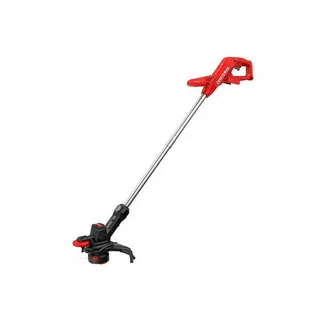Maintaining a well-kept yard often requires the use of a reliable string trimmer. However, with so many options available, homeowners are often left wondering: Electric vs Gas String Trimmers: Which One Is Right for You? Each type has its pros and cons, and the right choice largely depends on your specific yard needs, budget, and preferences.
Understanding the Basics
Before diving into the comparison, it’s helpful to understand what string trimmers do. Also known as weed eaters or weed whackers, string trimmers are handheld tools designed to cut grass and weeds in areas that a lawn mower can’t easily reach — such as along fences, edges, and tight corners.
There are two main types:
- Electric string trimmers (corded or battery-powered)
- Gas-powered string trimmers
Let’s take a closer look at each.
Electric String Trimmers: Quiet and Convenient
Electric string trimmers have gained popularity in recent years, especially with the rise of powerful lithium-ion batteries.
Pros:
- Lightweight and easy to maneuver – Ideal for smaller yards or people who prefer low-effort equipment.
- Low maintenance – No need for oil changes or refueling.
- Quieter operation – Great for neighborhoods with noise restrictions.
- Eco-friendly – No direct emissions during use.
Cons:
- Limited run time (for battery-powered models) – Typically 20–60 minutes per charge.
- Less power – May struggle with thick weeds or overgrown areas.
- Cord limitations (for corded models) – Restricts mobility based on cord length.
Gas String Trimmers: Power for Tough Jobs
Gas trimmers have been the traditional choice for decades, especially for professional landscapers and homeowners with large properties.
Pros:
- More powerful – Cuts through dense grass and thick weeds with ease.
- Longer run time – No need to stop for battery recharging.
- Greater mobility – No cord to limit your movement.
Cons:
- Heavier and noisier – Can be tiring to use over long periods.
- Requires regular maintenance – Fuel mixing, spark plugs, and oil changes.
- Produces emissions – Not environmentally friendly.
Electric vs Gas String Trimmers: Which One Is Right for You?
When choosing between electric and gas trimmers, consider the size of your yard, the density of vegetation, and how often you’ll be trimming. If you have a small to medium-sized yard with mostly light trimming needs, an electric string trimmer (especially a cordless one) may be more than enough.
However, if you’re dealing with thick brush, large areas, or frequent trimming sessions, the power and durability of a gas string trimmer might be worth the extra maintenance and noise.
Cost Comparison
- Electric trimmers usually cost less upfront ($50–$200), with minimal ongoing maintenance costs.
- Gas trimmers tend to be more expensive ($100–$300+), and you’ll need to factor in fuel and maintenance supplies over time.
Final Verdict
So, Electric vs Gas String Trimmer: Which One Is Right for You? The answer depends on your specific needs:
- Choose electric for convenience, quiet operation, and lighter tasks.
- Choose gas for raw power, mobility, and heavy-duty yard work.
No matter which one you pick, a string trimmer is an essential tool for keeping your outdoor spaces looking clean and tidy. Weigh the pros and cons, and you’ll find the perfect fit for your landscaping goals.


